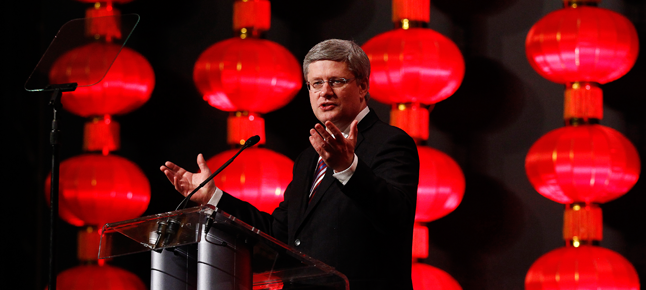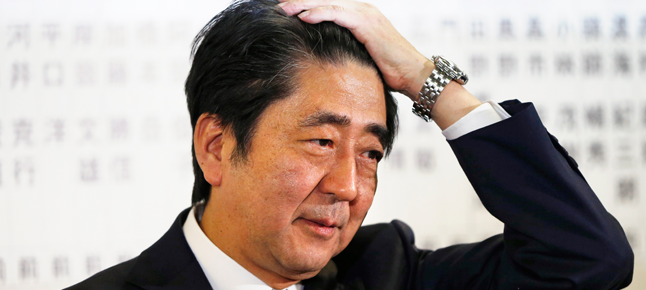Southeast Asia Power Shifts Vibrant Economies Archives Canadian International Council Canada
Post on: 16 Март, 2015 No Comment

As a lead up to the CIC National Capital Branchs November 25 conference, this blog aims to stimulate debate on Southeast Asia and to engage discussion on the many opportunities and risks of Canada’s future role in the region.
The full day conference: Power Shifts & Vibrant Economies: Canada Awakens to the Opportunities and Risks in Southeast Asia will discuss Canada’s Stake and Strategy in Southeast Asia and Governance, Trade, and Investment in the region. For more information and to buy tickets please visit our event page .
Articles will be published every Tuesday and Thursday for the month of November and we encourage you to join the discussion through our various social media platforms.
Managing Editor: Diane Tisdall
Contributing Editors: Taylor Pearce, Uri Marantz, and Wisam Salih
Power Shifts and Vibrant Economies: Canada Awakens to the Opportunities and Risks in South East Asia – Conference Sum Up
Held at Ottawa University, the conference, titled: “Power Shifts and Vibrant Economies,” had four panels discuss issues in the region, trade and investment, geopolitics and Canada’s future engagement strategy in Southeast Asia. Representatives from Canada’s Parliament, international academia, and the private sector delivered engaging discussion stemmed from their diverse views informed by their differing connections with the region. More
Manulife, National Defence, CSIS, the Centre for International Policy Studies, Export Development Canada and Centre for International Governance Innovation sponsored the event.
Honarable Deepak Obhrai, Parliamentary Secretary to the Minister of Foreign Affairs launched the discussion detailing Canada’s current role in Southeast Asia. He explained that Canada has a sincere stake in the region’s prosperity, security and government. And, as 1 in 5 Canadian jobs are tied to exports, Canada plans to strengthen our trade relationship with the region.
Most future #energy demand will take place in Asia. #Canada can be a reliable, resource rich partner to #seASia @deepakobhrai #CICseAsia
— CICOttawa (@CICOttawa) November 25, 2014
Hon. Obrahi also commented that Canada can add real value in the region in areas like cyber security, military, and medicine. He added that Canada’s government works to combat South East Asia’s high inequality through development programming that reaches over one billion dollars.
The High Commissioner of Malaysia chaired the first panel on issues in Southeast Asia. Numerous mentions were given to ASEANs growing economy, the regions security tensions, and the transitional state of many of its countries. Speakers noted that natural disasters are prevalent in the region and bring displacement, loss of GDP growth and human security challenges.
The speakers highlighted ASEAN’s role in the wider regional platform and posed questions of how it can maintain neutrality and shape a cooperative region amidst its many challenges. Also questioned was whether ASEAN has the leadership and visionaries it requires to succeed.
Murray Heibert, one of the panellists, and Senior Fellow and Deputy Director of the Sumitro Chair for Southeast Asia Studies, Center for Strategic and International Studies examined two transitional countries and Canada’s relation with them: Myanmar and Indonesia. Myanmar continues to struggle with religious conflict after their history of amnesty in the south, a fighting central government, and a weak democracy. Myanmar recently hosted elections, initiated reforms, released political prisoners and eased censorship of media, which prompted Western countries including Canada to lift sanctions. Canada increased our development assistance and also opened an embassy in Myanmar. Heibert stressed that since Myanmar’s ethnic minorities (40 per cent of the population) control the country’s resources, in order to improve the economy, minorities need to be integrated into a whole country reform strategy. Myanmar is engaging in dialogue with major armed ethnic groups, but democratic reform remains a challenge as their civil society, minority and religious groups are pulling the country in different directions.
Heibert looks to Canada and other Western countries to ensure Myanmar’s 2015 elections are free and fair and suggests Canada revamp development projects with religious tolerance programming.
Hieburt then discussed Indonesia’s set of challenges. The vibrant democracy is Canada’s largest trading partner in Southeast Asia and the main artery to the South China Sea. Indonesia is a country of development focus for Canada and we work with them on poverty reduction, natural resource management, and religious tolerance. Despite, Indonesia’s tough market with protectionist policies and frequently changing regulations on imports, mining, oil and gas, Heiburt stressed the importance of continuing to build strong relations with them.
After a quick break over coffee, networking and sweets, the conversation flowed to trade, investment and supply chains .
Peter Hall, Vice-President and Chief Economist of Export Development Canada gave a conclusive talk and argued that Canada has the comparative advantage in trade services in Southeast Asia. Hall contends China should also invest in Southeast Asian countries as China needs regional growth to aid its own economys growth: What is good for China is very good for Southeast Asia.
Craig Steffensen, from the Asian Development Bank, highlighted the difficulties that ASEAN countries are experiencing in channeling domestic savings into financing for bankable infrastructure projects. With 616 million people, and 120,000 moving into ASEAN cities daily, it is no surprise that Southeast Asias infrastructure needs are large. In 2010, ADB estimated that the ASEAN region needs $1.1 trillion in infrastructure investments over a 10-year period. This translates to between 5-9% of annual GDP spending in different countries across the region. However, with the possible exception of Viet Nam, none of the countries have come close to what they need to spend. The challenge is how to channel the regions ample capital flows flows into project financing. Considering annual investment requirements of about $110 billion, the fact that only one-fourth is now coming from the private sector poses a huge fiscal burden for the public sector. Concerted investment climate reforms are therefore required which facilitate appropriate risk-sharing between the public and private sectors. ADB led the establishment of an ASEAN Infrastructure Fund recently with just under $500 million in equity capital, as an important first step. Many more such steps are required, and the region’s infrastructure financing landscape must undertake major reforms to attract financing of the scale needed if the region is to sustain its momentum for growth and development and prevent an impending infrastructure crisis. Major investment opportunities include those related to the regions energy, transport, urban development, and water and sanitation needs.
Manfred G. von Nostitz, a Canadian business consultant based in Malaysia, and former Canadian Ambassador accredited to six ASEAN countries launched his talk with a known, but frustrating fact: Australia is doing far better in trade in Southeast Asia than Canada. As Canada has flip-flopped on our relationship with the region we now need to prove we are reliable and can be a long term partner. Nostitz argued that the partnership holds little risk, as he believes there is zero-chance of ASEAN armed conflict. He also offered an charming antidote of former Prime Minister Trudeau visiting the region for 17 days a trip that no other leader has replicated in length and called upon Justin Trudeau to follow his father’s footsteps. Nostitz also gave comprehensive advice to working in the region. His three main takeaways were: Canadians must i) work with trusted local partners; ii) value personal relationships; and iii) follow Southeast Asian customs and etiquette. The latter, Nostitz explained, is very easy as ASEAN countries are accepting of foreigners and foreign investment and respect intellectual property rights. He noted the superiority of conducting business in ASEAN over China but that we must seize the opportunity now to build positive relations with ASEAN.
Professor Ken Jimbo of Keio University in Japan offered a discussion on Japan’s relations with maritime security and stressed that Japan and ASEAN have mutual defence interests in the South China Sea. He also explained Japan’s new direction in engaging Southeast Asia that is driven by regional networking, strategic financing, and capacity building. Dr. Nong Hong from the University of Alberta continued the discussion on the South China Sea and argued that there is not currently a comprehensive legal mechanism to tackle sovereignty claims. This discussion flowed well after Hon. Obhrai voiced earlier that Canada is willing to work with China to settle the maritime disputes.
Canada is welcome to work w/China to establish a code of conduct in the #SouthChinasea @deepakobhrai #CICseAsia @EpochTimesCan @DFATDCanada
— CICOttawa (@CICOttawa) November 25, 2014
Vikram Singh weighed in on the debate and said Canada cannot strengthen ties with ASEAN without getting in the middle of power rivalries but it is important that ASEAN does not get caught up in a Cold War-like rivalry between China and the United States. He elaborated that ASEAN’s prosperity can be attributed to their cooperation and consensus driven model. But, ASEAN’s focus on unity may not be conducive to understanding the important geopolitics of the big powers. He also boldly stated that he believes China will unquestionably win the maritime dispute in South China Sea.
Much of ASEAN’s prosperity can be attributed to their cooperation and consensus driven model. #CICseAsia @AsiaPacificFdn @iAffairsCanada
— CICOttawa (@CICOttawa) November 25, 2014
The final panel discussed Canada’s strategy in Southeast Asia. John Ravenhill, Director of the Balsillie School of International Affairs discussed the benefits and opportunities of a Free Trade Agreement (FTA) between Canada and ASEAN. He used Australia’s FTA with ASEAN as an example and articulated that preferential trade agreements do not make a big difference in aggregate economic welfare. Ravenhill highlighted that educational services are Australia’s most important export to ASEAN an area where Canada lags. Ravenhill echoed Peter Hall’s earlier argument that Canadian companies have a comparative advantage in Southeast Asia in the services industries, especially in our world class sectors of healthcare, hospitality and graphic design.
Yuen Pau Woo from the Asia Pacific Foundation of Canada offered advice for how the Canadian Ambassador to ASEAN can fill the unique position. Woo explained the Ambassador should spend more time in Canada, rallying important stakeholders to be involved with the region. He explained that the problem with Asian engagement is in Canada due to a lack of awareness of opportunities.
Before the concluding reception, Ron Hoffman gave a brilliant sum up of the main points of the conference. Some of his main points can be found below:

- Due to Canada’s uneven history in Southeast Asia we have a mixed reputation in the region. We are fairly confident that ASEAN will give us a chance to demonstrate we are reliable, but we should act quickly.
Malaysia high commissioner tells Canada to show up: we never see u at #ASEAN dialogues so we assume u r not interested #cndpoli #CICseAsia
— Jeremy Durant (@jerdurant) November 25, 2014
The conference team will craft a formal summary of the conference highlighting speaker’s discussions and the lessons learned. The report will be found on OpenCanada.org soon.
For more information on the CIC or upcoming events in Ottawa, visit their website here .
And to learn more about the Canada in Southeast Asia please, visit our blog here .
All photos are from Erik Plumadore, Graphics & Photo.














